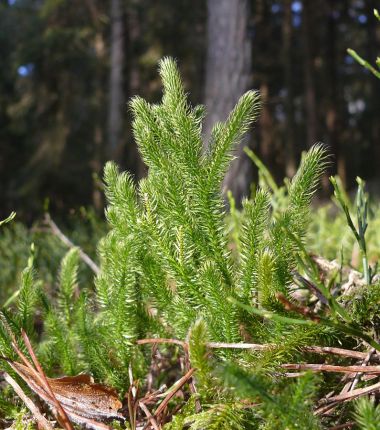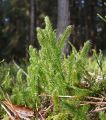Robin Hood's hatband: Difference between revisions
m (Text replacement - "=== Background ===" to "== Background ==") |
m (Text replacement - "=== Brief mention ===" to "== Brief mention ==") |
||
| Line 22: | Line 22: | ||
* {{:Wright, Thomas 1857a}}, vol. II, p. 806, ''s.n.'' Robin. | * {{:Wright, Thomas 1857a}}, vol. II, p. 806, ''s.n.'' Robin. | ||
== Brief mention == | |||
* {{:Gilchrist, Robert Murray 1913a}}, p. 24: 'The Red Campion [... is] known in several counties by his name.' | * {{:Gilchrist, Robert Murray 1913a}}, p. 24: 'The Red Campion [... is] known in several counties by his name.' | ||
Revision as of 14:50, 12 July 2018
| Plant name | |
|---|---|
| Folk name | Robin Hood's hatband |
| Binomial name | Lycopodium clavatum |
| First recorded | 1828 |
| Used where | Yorkshire, perhaps general in England |
By Henrik Thiil Nielsen, 2014-08-12. Revised by Henrik Thiil Nielsen, 2018-07-12.
Common clubmoss, lycopodium clavatum, the most widespread species in the genus Lycopodium of the clubmoss family Lycopodiaceae, is also known as Robin Hood’s hatband. Other names for the plant include: vegetable sulphur, goat’s claw, stag’s horn (clubmoss), wolf claw, wolf's-foot (clubmoss), wolf-paw clubmoss, foxtail clubmoss, running clubmoss, running pine, ground pine, princess pine etc. It grows mainly along the ground, with spores up to 1 m long.
The name Robin Hood's hatband is recorded as early as 1828 in William Carr's dictionary of the dialect of the Craven district (formerly West Riding of Yorkshire, now North Yorkshire).[1] James Orchard Halliwell records the name in his 1847 Dictionary of Archaic and Provincial Words without indicating any specific are where it was used.[2] The name is probably of too general use to be characterized as a dialect word.
Sources
- [Carr, William], compil. The Dialect of Craven, in the West-Riging of the County of York, with a Copious Glossary, Illustrated by Authorities from Ancient English and Scottish Writers, and exemplified by Two Familiar Dialogues.. Second Edition, much enlarged (London; Leeds, 1828), vol. II, p. 85 s.n. Robin-ith-hedge.
- Halliwell, James Orchard, compil. A Dictionary of Archaic and Provincial Words, Obsolete Phrases, Proverbs, and Ancient Customs, from the Fourteenth Century (London, 1847) (and editions of 1850, 1852, 1852, 1855, 1860, 1865, 1869, 1872, 1874, 1881, 1889, 1904, 1970, 1973), vol. II, p. 688 s.n. Robin.
- Wright, Thomas. Dictionary of Obsolete and Provincial English, containing Words from the English Writers Previous to the Nineteenth Century which are no longer in Use, or are not used in the Same sense. And Words which are now used only in the Provincial Dialects (London, 1857), vol. II, p. 806, s.n. Robin.
Brief mention
- Gilchrist, R. Murray. The Dukeries (London, Glasgow and Bombay, 1913), p. 24: 'The Red Campion [... is] known in several counties by his name.'
Background
Notes
- ↑ [Carr, William], compil. The Dialect of Craven, in the West-Riging of the County of York, with a Copious Glossary, Illustrated by Authorities from Ancient English and Scottish Writers, and exemplified by Two Familiar Dialogues.. Second Edition, much enlarged (London; Leeds, 1828), vol. II, p. 85 s.n. Robin-ith-hedge.
- ↑ Halliwell, James Orchard, compil. A Dictionary of Archaic and Provincial Words, Obsolete Phrases, Proverbs, and Ancient Customs, from the Fourteenth Century (London, 1847), vol. II, p. 688 s.n. Robin.



